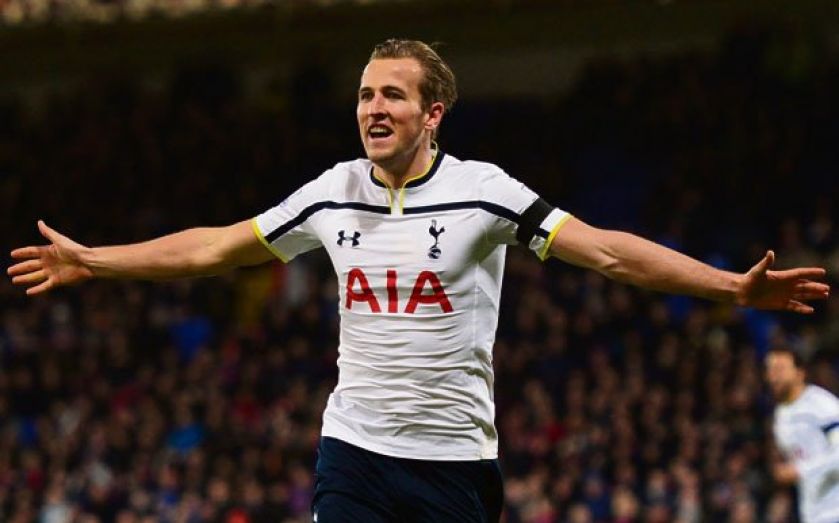Academies to benefit from clubs’ profits

Teams tipped to invest in new stadia
League more attractive to investors
PERHAPS it is pertinent that the Premier League’s emphatic return to profitability after 15 years is confirmed on the day that its club chiefs meet to discuss decisions that could shape the next decade or more.
Today in London Football Association chairman Greg Dyke is due to address representatives from the 20 top-flight sides in the hope of persuading them to vote for his proposed rule changes on homegrown players.
Dyke wants teams to agree to a stricter definition of what constitutes a homegrown player, to commit to including greater numbers of them in their squads, and to develop more young talent themselves.
It is part of his mission to unearth further gems like Tottenham’s Harry Kane, whose stellar rise could earn him an international debut tomorrow, and achieve Dyke’s stated aim of helping England win the 2022 World Cup.
While club chairmen may yet remain resistant to interference, Deloitte’s reporting of a record £190m profit across the Premier League for last season could make such changes more palatable, say industry experts.
Leading sides already spend vast sums on their academies but that is being tipped to increase as teams embrace a new era of profitability and redirect cash previously bled dry by player wage inflation.
“I think you’ll see investment in players, academies and in stadia,” Dan Jones, partner in Deloitte’s Sport Business Group, told City A.M.
“I really think the investment in academies has been huge and I expect it to continue to be very substantial. You’ve obviously got Greg Dyke’s proposals as well, which might help in that direction.”
Chelsea, Tottenham and Liverpool are among the clubs seeking to move stadium or increase the capacity of their current ground, and they and others may be more likely to succeed with similar projects now that top-flight football has emerged from years in the red.
Jones, who forecasts teams can expect profitability to continue with further broadcast revenue increases already guaranteed, added: “Suddenly if you’re a club looking at building a new stadium you’ve got quite a different situation to go and talk to the bank about.”
Clubs’ return to the black is down to their elimination of the so-called prune juice effect, by which any increase in central distributions from a new three-year television flowed straight into the pockets of players and agents in the form of wage rises.
For the two previous broadcast rights contracts, 56 per cent and then 81 per cent of income uplift was negated by extra salary costs. For the current deal, which activated in 2012-13, that figure was less than 20 per cent. Aggregate spend on wages plummeted to 58 per cent of total revenue last season, its lowest level for 15 years.
The Imodium, to extend the unsavoury analogy, has been European financial fair play rules forcing top teams to live broadly within their means, and the Premier League’s own cost-control measures, which curb clubs’ ability to increase player remuneration from year to year.
Top-flight takeovers have largely ground to a halt since their heyday in the last decade, but the financial calming could also attract would-be buyers back to the world’s richest football competition.
Jones says clubs have always held appeal but chiefly as “trophy assets – you get an emotional return out of owning them and then when you come to sell you should make a capital return because, even if the thing’s lost money every year, there will always be another guy who wants to own a top level football club.” Now, though, “that hugely irrational and irresponsible behaviour has been legislated away,” he added.
Supporters need not worry that the English game’s eye-watering sums are merely being diverted from players to owners, who will pocket the profits, Jones says.
“It’s not rampant, 25 per cent bottom line profit-margin situation, and also they’ve got £2.5bn of losses over the past decade top recoup first,” he said.
“Clearly this is more attractive than it was, if this trend continues, but I think you’re a long, long, long way off this being a licence to print money from a profits point of view. You’ve still got 10 times as much being paid on wage bill as there is profit. A 10/1 ratio is not exactly the mark of a rampantly profitable sector.”
A total spend of £1.9bn on wages means players are unlikely to go short, and Jones points out that, with a new £5.1bn domestic TV contract to take effect in 2016, salaries will continue to increase, albeit more modestly.
“You certainly couldn’t say this is the tap being turned off; lockdown; and austerity,” he said. “You’d say it’s a much more balanced approach.”
There is an irony in English teams’ off-field health being celebrated as an inquest continues into this season’s failings in European competition. Jones says regular profits will leave them armed to sign the players, invest in the academies and build the stadia to reverse that trend.
“All other things being equal you would expect that if you’ve got more money then you can get better players and then you will be successful on the pitch,” he said.
“I think it’s healthy for football that the money isn’t a guarantee. It’s not the be-all and end-all, but if you have the choice of more or less revenue to spend on the club to make it stronger you’d go for more every time. English clubs are well equipped in as much as they are part of the highest revenue-generating league in the world, and that gives them a head start.”